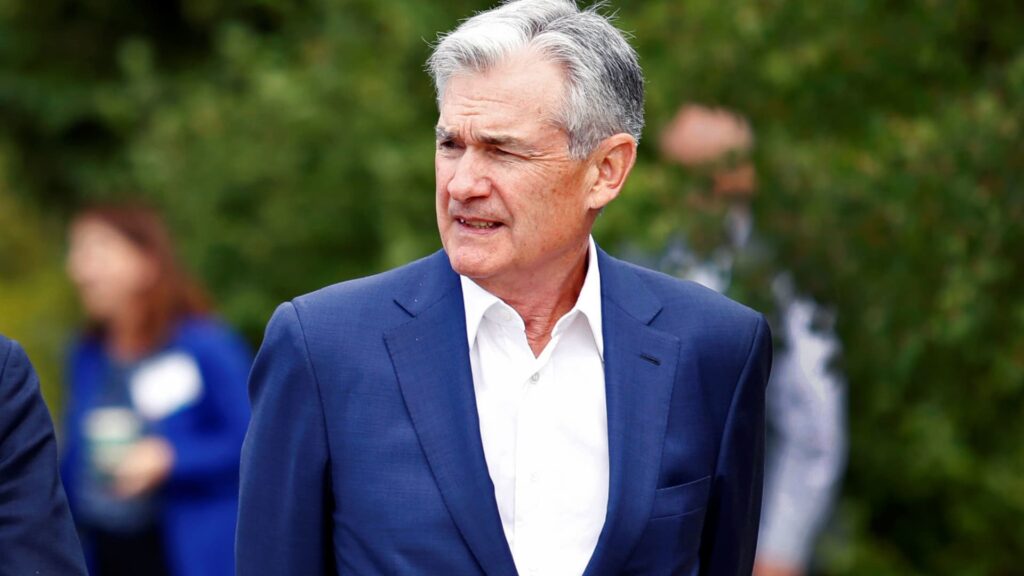Washington | Federal Reserve chairman Jerome Powell has warned the central bank stands ready to raise interest rates further if needed because of a threat of inflation resurging and becoming entrenched in consumer expectations.
Mr Powell told the annual Jackson Hole symposium of central bankers that inflation remained too high despite falling from its 9.1 per cent peak last year. The Federal Reserve could still lift its official interest rate beyond 5.5 per cent to wrestle inflation back down to the bank’s 2 per cent target.

The governor’s closely watched comments at the annual gathering in Wyoming come amid warnings from former US treasury secretary Larry Summers and other economists that inflation in the United States, United Kingdom, Australia and Canada was following a 1970s and 1980s path of falling away, before surging back.
“Although inflation has moved down from its peak – a welcome development – it remains too high,” Mr Powell said.
“We are prepared to raise rates further if appropriate, and intend to hold policy at a restrictive level until we are confident that inflation is moving sustainably down toward our objective.”
Mr Powell went further in his speech to warn financial markets that the goal was also to convince consumers that inflation was going to stay lower.
“Doing too little could allow above-target inflation to become entrenched and ultimately require monetary policy to wring more persistent inflation from the economy at a high cost to employment.”

Mr Summers said on Friday that there was a risk inflation could become resurgent as it did during the early 1980s, noting how closely the path of inflation was following that of 40 years ago.
“It is sobering to recall that the shape of the past decade’s inflation curve almost perfectly shadows its path from 1966 to 1976 before it accelerated in the late 1970s,” he also said.
In the 1970s, then-Fed chairman Arthur Burns lifted interest rates so high to temper raging inflation that they caused a recession. But he then eased rates so rapidly that inflation came roaring back.
Last month Jeffrey Kleintop, chief global investment strategist at Charles Schwab & Co, revealed a series of graphics showing how inflation was retracing its same path as the late 1970s and 1980s in the US, Australia, UK and Canada.
“It’s funny how history rhymes,” he said. “The 1970s dramatically illustrate inflation’s tendency to be volatile, even after peaking. History shows that it is probable that inflation is not likely to recede in a linear fashion in the coming months and quarters.”
Mr Powell said inflation could possibly resurge partly because low unemployment rates were having a greater influence on inflation than they had in the past. The latest US unemployment figures released this Friday will be closely scrutinised.
“There is evidence that inflation has become more responsive to labour market tightness than was the case in recent decades,” he said.
US central bankers have lifted interest rates to a range of 5.25 per cent to 5.5 per cent, up from near-zero as recently as March 2022, in a bid to cool the economy and wrestle inflation lower. They have been keeping the door open to the possibility of one more rate increase and have been clear that they expect to leave interest rates elevated for some time.
At Jackson Hole, European Central Bank president Christine Lagarde also said interest rates in the European Union would need to stay high “as long as necessary” to slow still-high inflation.
“The fight against inflation is not yet won,” Ms Lagarde said.
In contrast, Bank of Japan governor Kazuo Ueda said inflation in his country had been slower to rise than the central bank wanted, and it would continue with its current ultra-loose monetary strategy.
“We think underlying inflation is still a bit below our target of 2 per cent,” Mr Ueda said on Saturday during a panel discussion. However, Japan’s core consumer inflation hit 3.1 per cent in July, above the central bank’s 2 per cent inflation target for the 16th straight month.
Source : Financial Review


